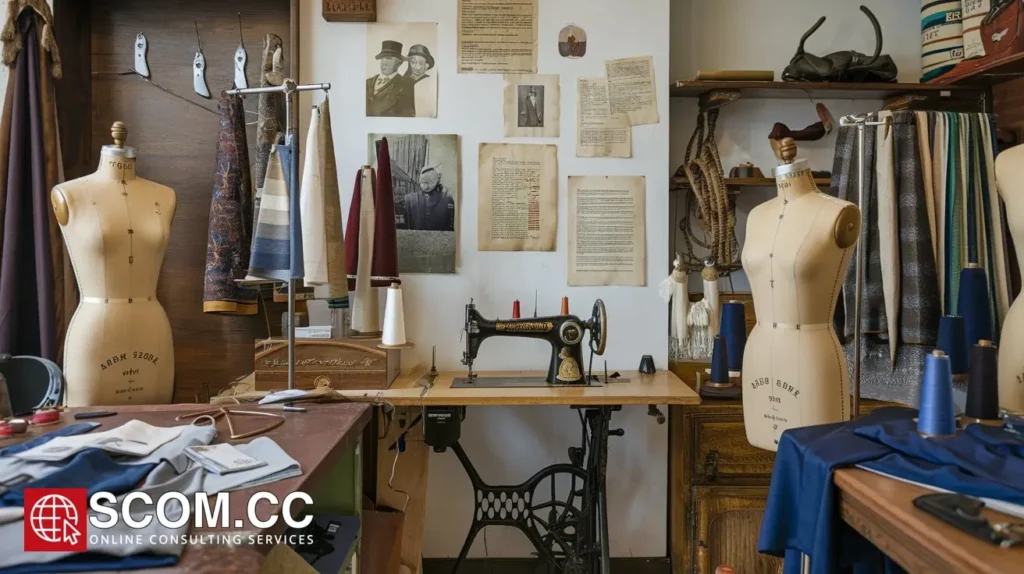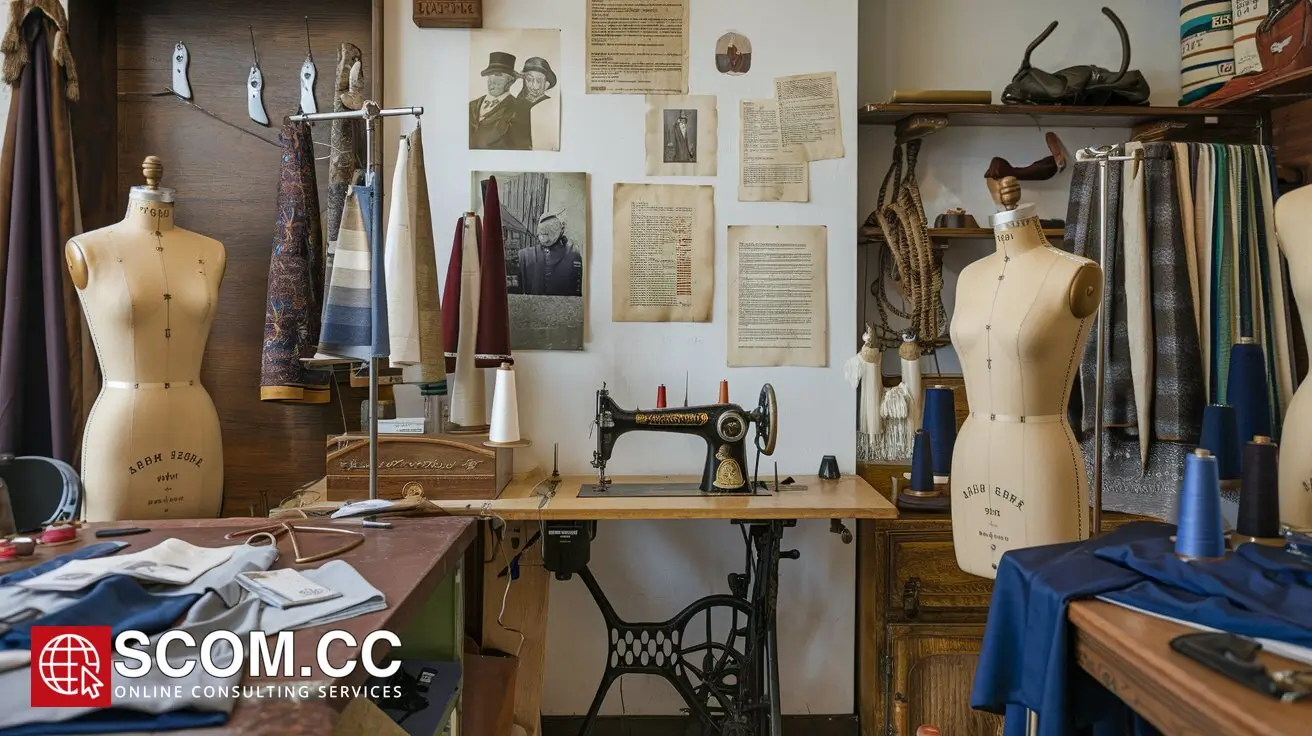How Have Tailoring Techniques Been Documented and Preserved Through History?

- How Have Tailoring Techniques Been Documented and Preserved Through History?
- Historical Documentation Methods
- Preservation Through Educational Institutions
- Visual Documentation and Media
- Technological Advancements in Tailoring
- Conclusion
- Summary Table
-
FAQ
- 1. What are some of the earliest written records of tailoring techniques?
- 2. How did pattern books contribute to the documentation of tailoring techniques?
- 3. What role did tailoring schools play in preserving tailoring techniques?
- 4. How have technical manuals and textbooks influenced the preservation of tailoring techniques?
- 5. In what ways have photographs and illustrations documented tailoring techniques?
- 6. How has film and television contributed to the documentation of historical tailoring practices?
- 7. What impact have digital archives and 3D modeling had on the preservation of tailoring techniques?
How Have Tailoring Techniques Been Documented and Preserved Through History?
The art of tailoring is a time-honored craft that has evolved over centuries, reflecting changes in fashion, technology, and society. The documentation and preservation of tailoring techniques offer invaluable insights into historical dress practices and cultural trends. Understanding how these techniques have been recorded and maintained through the ages not only sheds light on the evolution of fashion but also underscores the enduring significance of this skilled profession. This article explores the various methods through which tailoring techniques have been documented and preserved, highlighting the role of written records, visual documentation, educational institutions, and technological advancements.
Historical Documentation Methods
Written Records and Manuals
The earliest documentation of tailoring techniques can be traced back to written records and manuals from various historical periods. Ancient civilizations such as the Egyptians and Greeks documented their garment-making practices through hieroglyphics and manuscripts. One of the most notable early works is the Roman author Vitruvius’ De Architectura (circa 27-23 BCE), which, while primarily a treatise on architecture, included sections on clothing design and garment construction.
During the Middle Ages, the tailoring guilds in Europe began to formalize the craft, creating detailed guild records and manuals. These documents often included patterns, sewing techniques, and regulations governing the trade. By the Renaissance, more comprehensive texts like "Il Libro del Sarto" by Giorgio Vasari emerged, offering detailed instructions on tailoring techniques and styles prevalent at the time.
Pattern Books and Fashion Journals
In the 18th and 19th centuries, the rise of pattern books and fashion journals marked a significant advancement in the documentation of tailoring techniques. Pattern books, such as those by Jeanne-Marie Farina and Butterick, provided detailed patterns and instructions for various garments. These publications allowed tailors and home sewers alike to reproduce contemporary styles with greater accuracy.
Fashion journals and magazines from this period, including Vogue and Harper's Bazaar, documented the latest trends and tailoring techniques. They often featured illustrations and descriptions of garments, providing a visual record of how tailoring practices evolved over time.
Preservation Through Educational Institutions
Tailoring Schools and Apprenticeships
The establishment of tailoring schools and the practice of apprenticeships have played a crucial role in preserving and transmitting tailoring techniques. Institutions such as the London College of Fashion and the Fashion Institute of Technology have been instrumental in teaching and documenting tailoring practices. These schools not only provide formal education but also maintain archives of historical techniques and patterns.
Apprenticeship programs have historically been a primary means of passing down tailoring skills. Young apprentices learned from master tailors, absorbing both practical skills and traditional techniques. Many of these apprenticeships were documented through guild records and personal letters, which provide insight into the training processes and the evolution of tailoring methods.
Technical Manuals and Textbooks
In the 20th century, the development of technical manuals and textbooks further cemented the preservation of tailoring techniques. Books such as "The Art of Tailoring" by Edward A. Smith and "Patternmaking for Fashion Design" by Helen Joseph-Armstrong offer detailed explanations of tailoring techniques, pattern drafting, and garment construction. These resources have become essential references for both students and professionals in the field.
Visual Documentation and Media
Photographs and Illustrations
Photographs and illustrations have played a pivotal role in documenting and preserving tailoring techniques. Early photographs from the late 19th and early 20th centuries capture the meticulous work of tailors and the intricacies of garment construction. These visual records provide a snapshot of historical fashion and tailoring methods.
Illustrations in fashion magazines and books also offer valuable insights into tailoring techniques. Detailed drawings and sketches highlight specific elements of garment construction, from seam details to fit adjustments. These illustrations serve as both instructional tools and historical records of fashion trends.
Film and Television
The advent of film and television in the 20th century introduced a new medium for documenting tailoring practices. Films and TV shows often feature historical costumes, showcasing the tailoring techniques of different eras. Costume design departments in the film industry also contribute to the preservation of historical techniques by recreating garments with attention to historical accuracy.
Technological Advancements in Tailoring
Digital Archives and Online Resources
In recent years, digital archives and online resources have revolutionized the documentation and preservation of tailoring techniques. Institutions such as the Victoria and Albert Museum and the Fashion Institute of Design & Merchandising have digitized their collections, making historical documents, patterns, and garments accessible to a global audience.
Online databases and e-books provide a wealth of information on tailoring techniques, including historical patterns, tutorials, and video demonstrations. These digital resources ensure that traditional tailoring methods are preserved and available for future generations.
3D Modeling and Virtual Tailoring
The development of 3D modeling and virtual tailoring technologies represents a significant advancement in the documentation of tailoring techniques. CAD (Computer-Aided Design) software allows for the creation of detailed digital patterns and virtual garments, facilitating the exploration and preservation of complex tailoring methods. These technologies also enable the simulation of garment fit and construction, providing a modern approach to studying traditional techniques.
Conclusion
The documentation and preservation of tailoring techniques have evolved significantly through history, from ancient written records to modern digital archives. Each method, whether it be through manuals, pattern books, educational institutions, or technological advancements, has contributed to the rich tapestry of tailoring knowledge we have today. By examining these methods, we gain a deeper appreciation for the craft of tailoring and its enduring legacy. As we continue to innovate and embrace new technologies, the preservation of these techniques ensures that the art of tailoring remains vibrant and relevant for future generations.
Summary Table
| Documentation Method | Description | Historical Context | Significance |
|---|---|---|---|
| Written Records and Manuals | Ancient manuscripts, guild records, and manuals detailing tailoring techniques. | Ancient Rome, Middle Ages, Renaissance | Provided early formal documentation of tailoring methods. |
| Pattern Books and Fashion Journals | Publications with garment patterns and fashion illustrations. | 18th-19th centuries | Offered accessible designs and trends for tailors and consumers. |
| Tailoring Schools and Apprenticeships | Formal education and hands-on training in tailoring techniques. | 19th-20th centuries | Ensured systematic transmission of skills and knowledge. |
| Technical Manuals and Textbooks | Comprehensive guides on tailoring techniques and pattern drafting. | 20th century onward | Served as key references for both students and professionals. |
| Photographs and Illustrations | Visual records capturing tailoring techniques and garment details. | Late 19th-20th centuries | Documented practical aspects and historical fashion. |
| Film and Television | Media showcasing historical costumes and tailoring techniques. | 20th century onward | Provided visual documentation and inspired costume design. |
| Digital Archives and Online Resources | Digitized collections and online databases with patterns, tutorials, and historical documents. | 21st century | Made historical and technical information widely accessible. |
| 3D Modeling and Virtual Tailoring | Use of CAD software to create digital patterns and simulate garment fit and construction. | 21st century | Modernized the preservation and study of tailoring techniques. |
FAQ
1. What are some of the earliest written records of tailoring techniques?
The earliest written records of tailoring techniques include ancient manuscripts and hieroglyphics from civilizations like Egypt and Greece. Notably, Vitruvius’ De Architectura, written between 27-23 BCE, contains sections on clothing design and garment construction.
2. How did pattern books contribute to the documentation of tailoring techniques?
Pattern books from the 18th and 19th centuries, such as those by Jeanne-Marie Farina and Butterick, provided detailed patterns and instructions for various garments. These books made it easier for both professional tailors and home sewers to replicate contemporary styles, documenting fashion trends and techniques.
3. What role did tailoring schools play in preserving tailoring techniques?
Tailoring schools, such as the London College of Fashion and the Fashion Institute of Technology, have played a crucial role in preserving and teaching tailoring techniques. They offer formal education, maintain archives of historical techniques, and train new generations of tailors.
4. How have technical manuals and textbooks influenced the preservation of tailoring techniques?
Technical manuals and textbooks, such as "The Art of Tailoring" by Edward A. Smith and "Patternmaking for Fashion Design" by Helen Joseph-Armstrong, have provided detailed instructions on tailoring techniques, pattern drafting, and garment construction, serving as important references for education and professional practice.
5. In what ways have photographs and illustrations documented tailoring techniques?
Photographs and illustrations have captured the intricate details of tailoring techniques and garment construction over time. They provide a visual record of historical fashion and help preserve the practical aspects of tailoring methods.
6. How has film and television contributed to the documentation of historical tailoring practices?
Film and television have showcased historical costumes and tailoring techniques, often with a focus on accuracy. Costume design departments use these media to recreate garments, preserving and documenting historical tailoring methods.
7. What impact have digital archives and 3D modeling had on the preservation of tailoring techniques?
Digital archives and 3D modeling have revolutionized the preservation of tailoring techniques by making historical documents, patterns, and tutorials widely accessible online. CAD software and virtual tailoring technologies also allow for the simulation and study of complex techniques, modernizing the preservation process.

To explore more about tailoring, visit our Blog of Tailoring. If you have any questions or need assistance, go to our contact page. Additionally, you can find more information about tailoring and consulting at this tailoring and consulting portal.

Leave a Reply